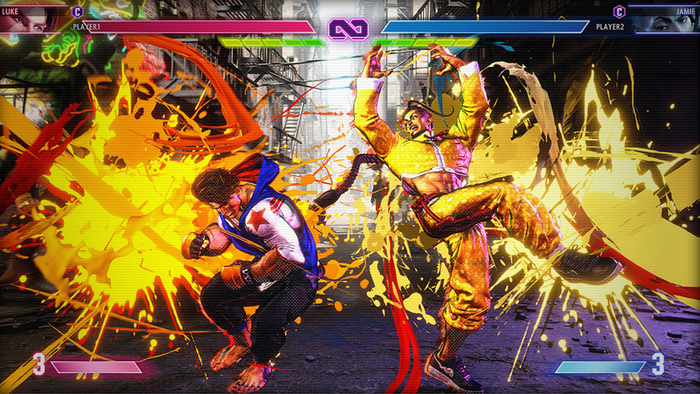A Grey Striped Revolution: Michael Chang On The Ad-Supported Model
Greystripe’s Michael Chang believes that their Adwrap network and Gamejump portal represent “A revolution in Mobile Gaming.” By offering free ad-supported games to the consumer. As one of the pioneers of this model, we catch up with Chang in this interview held shortly before GDC Mobile.

 When we last spoke to Michael Chang, in September 2006, the ad-supported model of game distribution was still in the process of being proven. However, with more than 1.4 million downloads on Gamejump.com within 4 months of launch and new distribution partnerships made with networks such as MobilePro's ProGames Network and more and more publishers signing up for the service, including the likes of Orange Pixel and Kiloo, Chang is more than willing to argue that Greystripe's solution is a revolution in mobile gaming. Games On Deck sat down with Chang pre-GDC Mobile to discuss. Chang opened by describing exactly what he felt the revolution in mobile gaming that Greystripe offered was.
When we last spoke to Michael Chang, in September 2006, the ad-supported model of game distribution was still in the process of being proven. However, with more than 1.4 million downloads on Gamejump.com within 4 months of launch and new distribution partnerships made with networks such as MobilePro's ProGames Network and more and more publishers signing up for the service, including the likes of Orange Pixel and Kiloo, Chang is more than willing to argue that Greystripe's solution is a revolution in mobile gaming. Games On Deck sat down with Chang pre-GDC Mobile to discuss. Chang opened by describing exactly what he felt the revolution in mobile gaming that Greystripe offered was.
Michael Chang: "A revolution in Mobile Gaming. Free. Ad-supported." really describes what we're about. And the reason we believe that this is truly a revolution is that we're the first company to provide mobile games, free to the end consumer, based on the ad-supported model. Analogies include TV, radio, newspapers... They're all ad-supported, and so we think that model should really be applied to mobile content also.
The business model obviously has to make sense to everyone involved in the value chain, however. It doesn't actually just have to make sense, it has to be valuable. So, the publishers, probably the most important people in our value chain, as they're the creators of the games and the application, well, we really consider our product really a service for them. If you look at it, generally it's hard for even a medium sized publisher to get sufficient distribution; they have to work with certain carriers, and so on, so we want to provide them good worldwide distribution and a revenue from that.
We try and provide an end-to-end, frictionless solution for them to make it as painless as possible for them.
The second party that this has to make sense for is the advertiser. Obviously they are the source of all of the revenue in the value chain, so we have to provide them something worthwhile, of a similar quality to what they would get for their money from TV, for example. And so we do that by providing a full screen advertisement on the mobile.
The last part of that value chain is the consumer. Now, we don't want to say that they're not valuable to us, but it's been proven that the consumer wants their media for free, so while we care about their consumer experience, we don't want ads to hurt the experience or mess with the gameplay, and it makes perfect sense that they want their media for free, but we have to balance that.
It's very important for us to work with this value chain end to end. So at Greystripe we really consider ourselves to be in the distribution business.
Games On Deck: Describe for us exactly what happens for a consumer with a title downloaded from Gamejump.
MC: With a game downloaded over Gamejump, when the game is launched immediately an advert comes up and fills the screen. This is the full screen ad that we sell to advertisers. If the user hits any buttons, they get a menu with which they can select an option. They can continue on to the game, or they can select to do something relevant to the ad - they can click to call, click to mobile web, or click to a jump page. So if they decide to continue with the advert they can. They're typically kicked out of the game, but as soon as they're done they can reload it. We typically serve two ads at the beginning of the game and two ads at the end of the game.
GOD: So how long does that process take?
MC: You know, if they're just trying to get through the ads and into the game, it can take 5 seconds, or even less. It's really only a couple of clicks. It's fairly non invasive, but it gives advertisers a very grand, full screen impression.
GOD: Are the adverts provided with the game, or are they downloaded when the game begins?
MC: The ads are currently dynamically served; the ad client makes a request to the ad server sporadically to download new ads while the game is being played, so behind gameplay, and then they're served with the game.
GOD: You can still use the games if you're offline?
MC: Exactly, yes.
We really wanted the consumer experience to be good; we didn't want them to have to wait for a connection to a server, for example.
You always have to balance out "not getting in the consumer's face" with giving the advertiser a meaningful impression. Maybe in future we'll provide adverts between levels, or product placement within levels, but for now, because the market is so early, we've gone with full screen pre and post advertisements.

Michael Chang
GOD: How do you target the advertising to consumer groups?
MC: We're pretty careful to not segment our inventory too finely, but we target based on geography, or carrier, very important for some promotions, and we can also do by the genre of game that is being played.
GOD: Are you planning on moving towards video and audio adverts too?
MC: Yes, we are. We can already do those adverts with Adwrap, but the challenge is that not a lot of handsets are currently video capable, in the US for example many handsets use a carrier system for video streaming, but third party applications can not typically use those systems. We imagine that will change over time, so even though we have a good solution we're having to sit on it.
GOD: Is bandwith an issue?
MC: It can be, yes, but because we can pre-load, cache the videos behind gameplay it's not as big an issue as you might imagine.
GOD: What do you attribute Greystripe's recent successes to?
MC: If you think about even just a year ago, there really wasn't the scale on offer in the mobile game space to support the advertising industry, with top titles managing maybe 200,000 downloads. That's not really critical mass for what an advertiser is looking for.
We do really believe that we're growing the market by offering free content. We've discovered that a lot of our users are actually first time gamers. We think that benefits the whole industry; if players start with free, ad-supported titles they'll actually see the value of the games and in many cases convert into purchasers of full-price on deck content as well.
GOD: What are your numbers like on repeat users?
MC: We estimate that our users are downloading between two to three games on average.
GOD: What do you see as the centre to your strategy? Your distribution network (Gamejump.com) or your Adwrap technology?
MC: That's something we struggle with, actually. It's really not clear to us which is dominant. First of all we look at them as complimentary, with Gamejump working as the showcase for our Adwrap technology, but in the long term there are so many good distribution points, casual games websites, mobile portals, that we think that though Gamejump will remain a fantastic showcase, and we'll continue to innovate there, our catalogue partnerships is really going to be a larger market.
GOD: How does Adwrap integrate with developer's processes?
MC: What's very unique about our solution is that from a partner we get the executable, or rather the complete, downloadable game - they don't even have to give us the code - and we can integrate that with our adwrap technology. We take those files, and we actually decompile it ourselves, and add our technology, and recompile it for distribution. So we don't actually have to do any testing, because the finished product hasn't been altered in any way.
We been able to scale well: we have 46 or 47 publisher relationships, and we're currently distributing over 400 games now.
GOD: Do you see in future, if your advertising becomes more in-depth (product placement, etc.) that situation changing?
MC: Well, the terminology, "Adwrapping" for our solution is probably a little bit of a misnomer. We can honestly put any sort of advert into a game - we can do graphic replacement within games, for example, and the reason that we went to market with just pre and post adverts is that it's easier to explain to publishers and distributors.
We do have a flexibility with our Adwrap technology to go forward with its development.
GOD: Do any publishers see your service as facilitating a "long tail" for their mobile games? They sell it full price when it's new, then release an Adwrap version later?
MC: I think the long tail, if we think about what that term means, is most applicable for the largest publishers. For large publishers we're definitely a solution for games released on carriers, six months or a year down the line they can release an Adwrap version, yes, but for the small medium publishers we really are "the" solution for them, if they get carrier distribution that's great but it makes just as much sense to release the game in the ad-supported model at the same time.
GOD: How exactly does the revenue stream work?
MC: At the highest level, the money flows from the advertiser to us, and we revenue share the money back towards the publisher. I can't really get into specifics, but every ad impression is monetised.
GOD: So do publishers actually do anything? Or do they just give you their games and wait for the money to roll in?
MC: Basically! Certainly in the early days publishers really were just giving us their game and then sitting by the sidelines, not getting very actively involved, but publishers now are really taking their Adwrap games and using that to publicise themselves, such as offering the Adwrap version of their game from their own website. It's a pretty exciting shift that we're seeing.
Read more about:
FeaturesAbout the Author(s)
You May Also Like







.png?width=300&auto=webp&quality=80&disable=upscale)





